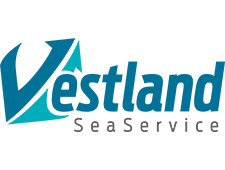WERGELAND GROUP: Catalytic Wergeland Driving Growth in Vestland
A gateway to the North Sea, Norway’s Vestland is open for business and the Wergeland Group is positioned perfectly to help the industry thrive. Group CEO Margunn Bjornestad talks to Energy Focus about a sustainable approach to longevity.
Almost 70 years ago, the foundations for a potential Norwegian industrial powerhouse were being put down in Vestland, on the Fensfjorden, as Sløvåg became the home of the Wergeland Group. A family-owned business, establishment came when they started operations at the Halsvik Cement Foundry 1956.
At the time, the company had little idea of how it would grow to become a key part of the offshore operations in the county, and a major driver of economic activity in the region.
Today, the Wergeland Group boasts a wide range of services created through innovation and acquisition over the past seven decades.
Critical in the energy industry, underpinning many offshore activities in renewables and oil and gas, Wergeland is aiming for further expansion.
Well-known for its oil and gas reserves, and a strong supply chain, Norway is often cited as a global energy leader. A growing wind energy presence in the North Sea combined with a supporting role in the wider European transition means that Norway is always in need of infrastructure and support specialists.
Margunn Bjornestad, Group CEO at Wergeland Group, tells Energy Focus that recent successes with major international renewables projects have buoyed the organisation as it looks forward with ambition.
“We have always been a family-owned business,” she opens, highlighting a vision: To create profitable jobs in the district. “Today, we operate in 12 different business areas. Our main location is Sløvåg where we are a landowner in the harbour and from where we conduct Base operations. We do offshore wind projects, we offer environmental services, we do oil spill response, we have mechanical services, we handle electrical ferry operations (where we have two small ferries built at our own shipyard), and we also have an operation in Hammerfest where we source and supply stones, gravel and other construction materials. We are also in plaster and gravel, produce concrete, fleet rental and are fully equity financed. We are proud of the different kinds of businesses in our group.”
IMPRESSIVE PROJECTS
In October 2024, Wergeland celebrated completion of a maintenance programme on the Hywind Scotland project. This floating offshore wind prototype is the world’s first and comes from Equinor – Norway’s undisputed energy innovator. Five turbines were towed in from Scotland and docked in Sløvåg for essential works before moving back to site, off the coast of Aberdeenshire, to continue generating enough energy for 35,000 UK households.
“Between May and September, we had the impressive project from Scotland and that was very exciting for us, with the UK market looking to our harbour,” Bjornestad says, adding that Wergeland was also the home of assembly for the Hywind Tampen structures.
Wergeland Group undertook the work and proved the group’s ability in the wind energy sphere. Typically known for its work on jackets and similar large structures, Wergeland Group has all the equipment required for complex maintenance in offshore operations. A deep fjord with today 1,750 m quay, extensive heavy lifting equipment, cranes and supporting infrastructure, and a perfect position for North Sea operations make the company a strong partner for this in the energy industry.
“We are building a large drydock with length of 135m, width of 105m, and a depth of 20m, with 330m continuous quay front – one of the biggest in Europe, and that is attracting several other large projects. We are building more quays every day and the goal for this year is to build 300 m of new quay,” Bjornestad explains.
Part of this expansion will see Wergeland Group welcome a GE Haliade-X turbine to its industrial area in Sløvåg. This turbine will remain in place for 25 years after it completes a test phase to verify output and operation. The 15.5 MW unit is a next-generation offshore turbine that aims to reduce the overall cost of floating offshore wind in the long term.
The total height will reach 275m, with a rotor diameter of 250m and the unit should be ready for testing in 2026. During operation, it is expected that the turbine will save several litres of diesel per week as the port area moves to become one of the world’s first green industrial ports.
“We estimate that the future power demand in the industrial port will be around 30 GWh annually. With an estimated annual production of 55 GWh, the turbine adds 25 GWh of green power to the regional network. The surplus production will be physically consumed in the local area, regardless of which electricity supplier the individual neighbour uses,” details Bjornestad.
In December, she was among a panel of industry leaders to speak at WavEc in Portugal. She highlighted the importance of making offshore wind profitable saying it requires infrastructure like that of Wergeland’s to help improve efficiency.
“The fjord is very deep and is the perfect place for floating wind structures because they are very tall. We have a large area, which is expanding, and we have all essential infrastructure in place. This means we have space for both floating and bottom fixed projects at the same time. We are the main Norwegian general anchor base and that keeps us very busy,” she says.
PROUD PARTNERS
Against the backdrop of success in the renewable energy industry, and with a strong presence in oil and gas, Wergeland Group is bolstering its strength through development of strong relationships. Equinor is a key client, with a base across the fjord, and new tenants are coming on board all the time across the harbour. Recently, a major announcement was made when a big business opened in Gulen Industrihavn.
Stena Recycling began the process of launching in Sløvåg in January 2025, and the goal is to create the company’s largest branch (by offshore turnover). The business collects and recycles more than six million tons of complex waste annually.
“Stena Recycling is just establishing, and we are proud of that as Stena is a very large and very serious company, and we want to cooperate with all companies that establish here with a view of doing things the right way,” says Bjornestad.
“We see Sløvåg as a place with great potential, and which will be able to generate growth and development for Stena Recycling AS within the recycling of offshore-related fractions,” added Stena Recycling branch manager, Dag Rune Eide.
This partnership feeds into the longer-term vision of Wergeland Group to become a uniquely positioned green industrial organisation with an enviable location and a robust skillset capable of meeting the needs of the largest and most complex projects.
“Equinor is an important customer for us, both in offshore wind and environmental services,” Bjornestad highlights. “We have done a lot in oil and gas, and we are also working with several of the larger international companies. Many big brands have their eyes on us here, and they see Supersite Sløvåg as a place to establish a base.”
With an underlying theme of sustainability tying together all of the strategies in place across Wergeland Group, the organisation is recognised as a reputable player, claiming the Drivprisen in 2024 – a green innovation award in Vestland that lauds ideas, technology and people that look to play a part in the climate solution. With this green focus present across group operations, and with a strong history to build on, now is a promising time in Sløvåg.
“We always like to promote local opportunities in a global market. Our mission is to become one of the best in our industry across Europe, while building locally – that is very important for our business. We are keen to build community and society around us and that, for us, is a very cool thing to do,” Bjornestad concludes.


